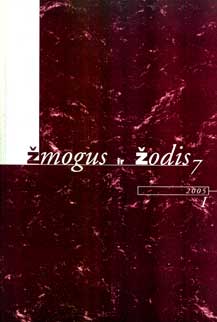Akademinių tekstų struktūra ir jos raiška
The Structure of an Academical Text and Means of its Expression
Author(s): Zita AlaunienėSubject(s): Language and Literature Studies
Published by: Vytauto Didžiojo Universitetas
Keywords: academic texi; horizontai (superficial) structure; vertical (in-depth) structure; metalanguage.
Summary/Abstract: An academic text is a kind of text, which is written by students and lecturers in institutions of higher education. Usually the purpose of such a text is to discuss sorne problem of science, to debate its specific issues, or to deliver the results of scientific research. The structure of an academic text is dependent on its content. It consists of elements that develop in two directions: horizontai and vertical. The horizontai, or superficial, structure consists of linear succession of related parts of the lext. Its main components are introduction, theoretical basis, data, results, argumentation, conclusions, literature, and supplements. The vertical, or deep, structure consists of the object of study, the problem, the goal, the tasks, and the ways of the ir solution. The specificity of academic texts is that not only do they investigate a scientific problem but also the structure of the text by using metalanguage. The article argues that metalanguage is used by students and lecturers in various ways within the texts of different gentes. It suggests that students who write research papers (i.e. Bachelor or Master degree theses) should be taught the essentials of metalanguage.
Journal: Žmogus ir žodis
- Issue Year: 07/2005
- Issue No: 1
- Page Range: 63-67
- Page Count: 5
- Language: Lithuanian

